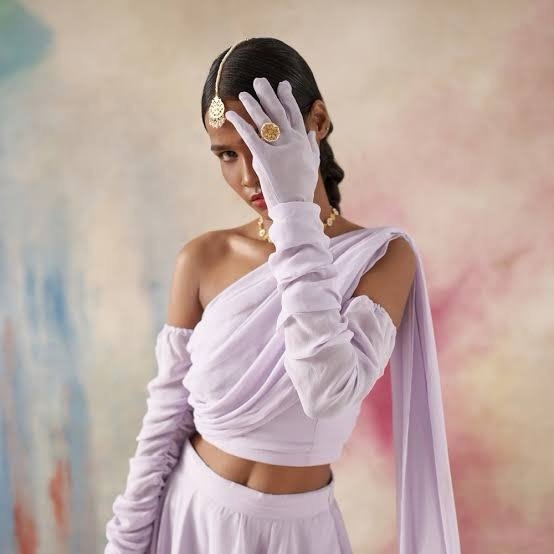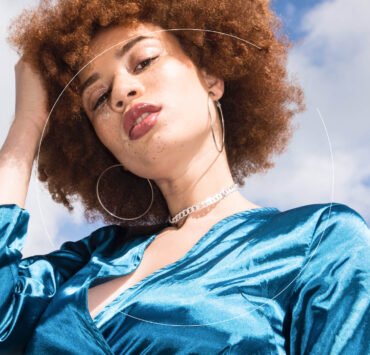Cultural fashion just got a futuristic upgrade. Brooklyn-based startup WEST X EAST is rewriting the rules of cultural fashion with AI. 3,000 customers, and a Times Square billboard later, the world is taking notice.
The Visionary Behind the Brand
Tania Kottoor, a first-generation Indian American, founded WEST X EAST to solve a deeply personal problem: the lack of accessible, well-fitting South Asian garments in the U.S. Growing up, she spent summers in India flipping through Vogue India magazines, captivated by designs unavailable in the U.S.
“There was so much amazing design in India that wasn’t coming back to America,” she explains.
After training at London’s Condé Nast College of Fashion & Design, where faculty identified her as “one of the next leaders of luxury fashion”, Kottoor launched WEST X EAST in 2020. The brand’s breakthrough came when she designed 75 custom outfits for her own wedding, featured in Vogue’s “Over the Moon” series.
AI-Powered Customization at Scale
At its core, WEST X EAST is “a 3D product configurator, powered by AI, designed to make personalized apparel scalable”. The platform uses smart tools to check 15+ body sizes, fabric choices, and cultural patterns like embroidery. Customers upload photos of ideas—from family clothes to Pinterest boards. Then the AI matches with a database of 100+ design patterns to make new looks.
Kottoor focuses on making culturally rich, customizable fashion for today’s shoppers. The system stops clashing colors in sarees or too-modern cuts in kurtas. Earlier, letting customers choose everything led to designs that didn’t work. “It’s customizable with parameters that we set and what we think will look good at the end,” Kottoor said. This balance of choice and expert guidance has led to selling over 2,000 garments to more than 3,000 customers since the 2024 relaunch.
Breaking Into the Mainstream
The brand’s Times Square billboard in 2024 showed its move from a small startup to a bigger industry player.
The Times Square billboard was a key moment for Kottoor, showing the result of a journey that started years ago in library corners where she began sketching designs. Her credibility was further increased by media features in BRIDES and mentorship from former venture capitalist Carolyn Katz through SCORE’s Pitch Competition.
Katz comlimented the company’s unique value: “I think she’s amazing. I thought she had such a great company and product.”
The startup’s success came despite challenges during the pandemic. Production delays and funding shortages almost closed operations in 2022, but Kottoor switched to a direct-to-consumer model with set customization options. This reduced production time from 12 weeks to 4-6 weeks while keeping quality.
Cultural Impact and Market Potential
WEST X EAST solves a key diaspora problem: Many South Asian Americans find it hard to get authentic, well-fitting traditional clothes for weddings or holidays. The platform’s AI also fixes this by:
- Keeping old stitching methods in clothes like lehengas
- Giving size options up to 5XL
- Adding modesty choices for necklines and sleeve lengths
Sustainability and Future Vision
The brand’s made-to-order model reduces textile waste by 40% compared to fast fashion. Each garment uses digitally printed patterns to minimize fabric scraps, while leftover materials are repurposed into hair accessories or jewelry. Sustainability is not just a trend for the brand, but a basic part of how it works.
Looking ahead, Kottoor wants to find partners to help grow the technology. In a LinkedIn post, she speaks out about this “I’m now looking for the right partner—or new home—for what we’ve created.”
“We launched with a focus on South Asian fashion, serving over 3,000 customers and proving that there is deep demand for culturally-driven, made-to-order experiences.
What we’ve built—technology, tools, and a loyal customer base—can now grow even further in the hands of a new operator, brand, or platform. I’m excited to explore what that future could look like.
If you’re building at the intersection of tech and customization—or you’ve been dreaming of bringing personalization to your industry—I’d love to talk,” said Tania Kottoor.
Bottom Line
WEST X EAST shows how technology can lift up cultural traditions instead of weakening them. Thanks to Kottoor’s vision, diaspora communities now have better access to heritage clothing that fits both their bodies and identities. The company’s growth—from facing pandemic struggles to gaining attention in Times Square—proves that blending cultural knowledge with new technology works.
For new entrepreneurs, Kottoor’s path from dreaming in libraries to changing the industry shows how personal passion can become real solutions. She believes cultural pride should not be blocked by practical problems, and WEST X EAST is working to remove those barriers.





